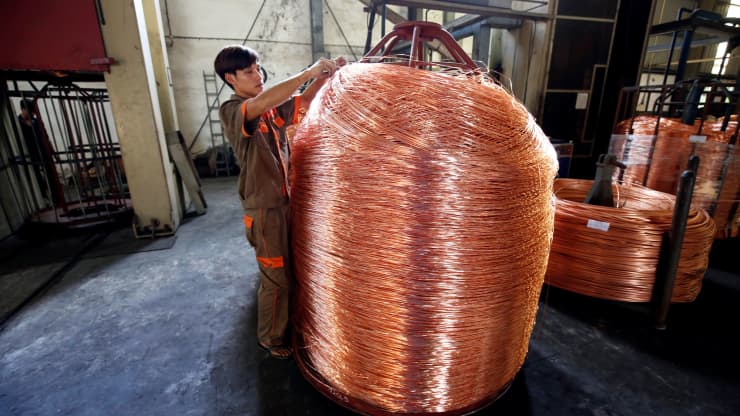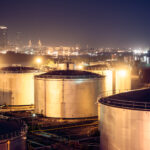An all-electric future depends heavily on copper, and looming supply shortfalls could hamper nations’ goals of reaching net-zero emissions by 2050, according to a new report from S&P Global.

Unless significant new supply becomes available, climate goals will be “short-circuited and remain out of reach,” the report says.
Electric vehicles, solar and wind power, and batteries for energy storage all run on copper. An EV requires 2.5 times as much copper as an internal combustion engine vehicle, according to S&P Global. Meanwhile, solar and offshore wind need two times and five times, respectively, more copper per megawatt of installed capacity than power generated using natural gas or coal.
Copper is also key to the infrastructure that transports renewable energy, thanks in part to its electrical conductivity and low reactivity. Its uses include cables, transistors and inverters.
“The energy transition is going to be dependent much more on copper than our current energy system,” Daniel Yergin, S&P Global vice chairman, told CNBC. “There’s just been the assumption that copper and other minerals will be there. … Copper is the metal of electrification, and electrification is much of what the energy transition is all about.”
The report forecasts copper demand nearly doubling to 50 million metric tons by 2035. By 2050, demand will reach more than 53 million metric tons. To put this figure in perspective, S&P Global noted that that’s “more than all the copper consumed in the world between 1900 and 2021.”
Renewable energy deployment will account for much of the demand spike. S&P Global forecasts copper needed for EVs, wind, solar and batteries tripling by the middle of the next decade. This will happen alongside demand growth from other areas, pushing copper’s demand to never-before-seen levels.
For the time being, increasing utilization at existing mines and ramping up recycling can fulfill some of the higher demand.
S&P Global offers two future scenarios in an effort to forecast how short the market will be. Under the “Rocky Road Scenario” — in which production continues largely as is — annual supply shortfall will reach almost 10 million metric tons in 2035.
In the more optimistic “High Ambition Scenario” — in which mines increase utilization and ramp up recycling — the market will still be in a deficit for most of the 2030s.
“Under either scenario, there would not be enough supply to meet the demand of Net-Zero-Emissions by 2050,” the report concludes.
A new geopolitical order
Demand for metals and minerals that fuel our future will ultimately create new world orders, as countries rush to secure supplies of copper, lithium, nickel and other vital raw materials.
“There will be a new geopolitical order around minerals like copper,” said Yergin. He noted that the copper supply chain is much more concentrated than that of other raw materials, including oil.
“China has been more focused on creating a primary position in the supply chains for minerals that will be necessary for net-zero carbon, and copper is a prime example for what a key position they’re in. Meanwhile, U.S. copper production has gone down by almost half in the last quarter century,” he told CNBC.
S&P Global’s report comes as copper prices are under pressure. Commodities broadly have tumbled as recession fears rise, sparking fears over a demand slowdown.
On Wednesday, copper hit its lowest level since November 2020, after a punishing second quarter that was the metal’s worst three-month period in more than a decade.





